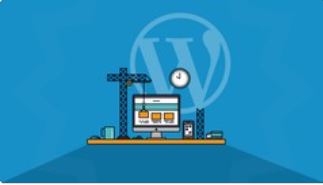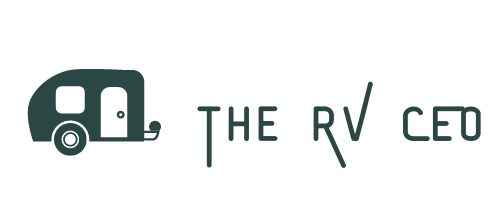How did I go from a career Human Resources Director to a freelance web designer? It seems like an unusual career transition but I did it. In this article I will show you step-by-step how to be a freelance web designer, even if you don’t have any experience with web design.
This is the exact process I followed when setting up my web design freelance business. So, no matter what your experience level is, this easy to follow process with give you some helpful tips on landing clients and making some real money.
What is a freelance web designer and how much do they make?
Freelance web designers work with individual clients to design websites based on the client’s needs. Some freelance web designers choose to focus on a particular industry or niche while others work across a variety of industries.
Freelancers typically work for themselves and don’t have set scheduled hours. It’s the perfect way to earn money for people who want to work from home or for freedom entrepreneurs.
According to salary estimates from Glassdoor and ZipRecruiter, freelance web designers can make on average $75,430 per year. But, there are freelancers out there charging $5000, $10,000 and even more to build a WordPress website (which has very little overhead). So, there is an opportunity to make a lot more.
Now, let’s get on with the process of becoming an awesome freelance web designer.
1. Set your goals
First of all, take a few minutes to write down what your goals are for your freelancing businesses. Is this a side hustle to earn some extra money? Will this be your full-time gig? How much time to you have to spend on it?
How much money do you want to make?
How much money do you want to earn and by when? It could take some time to get your business to the point where you’re making some decent money.
Are you going to focus on a niche or work across all industries?
A lot of successful web designers build a name for themselves in a particular niche.
If you’re just starting out, you may want to consider focusing on small businesses in order to get some experience. This is what I did when I started out.
Create your story
I found it really helpful to create a story that I could tell prospective clients. Most people knew me as an HR Director and a small business owner. So, I told the story of how passionate I was about my small business website and, because of that, I became obsessed about learning web design and search engine optimization so that my website outperformed my competitors.
My passion turned into a career of building websites for small business owners in the Palm Springs area. And, there was my story.
So, if you’re changing careers, think about your story.
2. Learn Web Design
The next thing is to learn the art of website design, if you don’t already know how.
WordPress is arguably the most popular platform used for website design. It’s the largest content management system (CMS) out there which makes it the ideal platform for websites of all kind.
If you are new to web design (as I was) and want to learn how, here are some free introductory courses to choose from. The first two are free courses from Udemy. The third course is the Online Entrepreneur Certification course that I took which got me started designing websites.
Udemy: WordPress for Beginners – How to Make a Website Step by Step
Make a Website with WordPress Using a Free WordPress Theme – Simple & Easy. No Experience Required!
Udemy: How to Create a Website Using WordPress (Step by Step)
A Step by Step Instructional Guide on How To Create A Fully Functional Website Using WordPress in Around 1 Hour!
Wealthy Affiliate: Build Beautiful Profit Ready Websites
Full disclosure: this is how I learned to design and build websites. It’s a platform designed for affiliate marketers (which means you’ll also learn how to make money off of your websites, which is a bonus). Their Online Entrepreneur Certification program is second-to-none. I wrote a detailed review of Wealthy Affiliate if you want to learn more about them.
3. What about HTML and CSS Code?
If you are going to design websites, it’s good to at least know the basics of how HTML and CSS code works. If you are using WordPress, a lot of the coding is done for you within the Theme you’re using. But, there will be times when you will need to adjust some HTML code or some styling using CSS so you should know the basics.
There are free courses online that will teach you the basics of HTML and CSS. I do recommend understanding how it works so when you see code you’ll at least understand how it works. You can always find help online if you need to create specific code for something. But, you do need to understand the basics.
4. Learn about domains, web hosting and servers
When you work with a client, they will usually expect you to help them get a domain name, find a hosting provider and build their website. Small business owners typically don’t know anything about building a website much less about hosting and domains.
Most hosting providers offer a service where you can purchase and register a domain through them. For more information on web hosting providers, you can click here.
Also, in addition to providing outstanding WordPress training, Wealthy Affiliate is also a world-class hosting provider where you can build your website and host it all on one platform. All the websites I’ve built for clients are hosted on Wealthy Affiliate’s hosting platform.
5. Learn some basics of graphic design
You will need to know some basics of graphic design. Photos, illustrations, animations and logos are a must for websites these days.
You can always partner with a freelance graphic designer to provide the necessary graphics for you. But, it will benefit you greatly (and save you money) if you can do this yourself.
I use a really cool tool called Canva. Canva is an online graphic design platform where you can create all sorts of graphics, images, logos, and all sorts of visual content for your websites. They have a free version which will give you all the functionality you need. I wrote a review of Canva if you want more information on it.
6. Build a portfolio

Of course, what better way to showcase your work then to have your own website and a portfolio of your work?
If you haven’t built any websites, ask a friend or family member if you can build a website for them. I started out building a website for my sister’s farm in Michigan. Then, I asked a friend if I could re-do her website for her business. I offered to build them for free so that I could have some websites to use for my portfolio.
Today, I manage their websites and do some SEO work so they are paying clients. It’s a great way to start building your portfolio and getting experience at the same time.
7. Price your service
Ah, the six million dollar question. There is a lot written about how to price your services. And, there’s no one true formula unfortunately. Web designers are charging anywhere from $100 to over $30,000 (and sometimes higher) for a WordPress website.
The price will depend on a lot of factors including:
- What type of website you’re building
- Is it an eCommerce website?
- Whether the client is providing you with all the content and images
- How much time it will take you to build
- Etc.
If you are just getting started, I recommend figuring out how much time you’ll spend designing the website. Then, determine what you need to make (i.e., hourly wage) in order to make a living and pay the bills. Then, multiply your hourly rate by the number of hours the website will take you to complete to come up with a starting price.
Here’s a trick I did. I called a couple web designers in my area and told them I wanted a website built and asked how much they would charge. They’ll ask some questions about the type of website you want so have a story ready. But, this is a good way to find out what the going rate is in your area.
8. Create a web design agreement
I would create a client service agreement to have the client sign before starting any project. It will lay out what the scope of work is, the price and what the client can expect from you.
You can find web design agreement templates online. Or, I’d be happy to share mine with you if you leave me a comment below in the comment section.
9. Go get customers
Ok, you’re ready to go. Let’s go get customers.
An easy way is to start with family, friends and acquaintances. Tell them what you’re up to. Refer them to the portfolio of sites you built (or to your website) so they can see your work. You may even offer them a discount because they’re kin (and you’ll continue to gain experience and build your portfolio).
If you are focusing on a particular niche or industry, make a list of all the businesses in your area and put together a plan for contacting them. I would drop in (if appropriate, especially during a global pandemic) and introduce yourself. Tell them what you do and leave a card or some information.
If they don’t have a website, write up a quick letter explaining the benefits of having a website and leave that with them. Or, mail it to them and follow up later. No hard sell.
Then, follow up again some time later. They’ll get to know you and trust you if they continue to see you. Even if they don’t hire you on the spot, they’ll remember you when they need some website work done or if they know someone who does.
As you start getting clients, ask them for a referral. Everyone knows someone who needs a website.
I would also blog regularly on your website by writing interesting articles related to web design or your niche. Share those on your social media platforms so that people know what you’re up to. I get lots of leads this way.
10. Best freelance sites to find work
I personally would avoid the freelance platforms if you can. They are extremely competitive and it’s really hard to get gigs that way. I would focus your efforts locally where you can build relationships and aren’t competing with a bunch of anonymous profiles.
If you do want to try a freelance site, I’ve had luck using PeoplePerHour. I’ve subcontracted some work to people there and they did a great job!
Go. Grow!
Once you start getting clients, you’ll start to see referrals and repeat business coming from them. Most of the websites I build now are from referrals from existing clients.
As you start getting more work than you can handle, consider outsourcing some of it or hiring an assistant.
Subscribe to web design blogs and continue to learn about what’s going on in the industry. It changes quickly and you want to stay on top of it.
It will take you a while to go through all 10 steps but you’ll eventually have a great business that you can be proud of.
Leave a note below in the comment section if you have any questions or if I can help you in any way. Good luck!!


